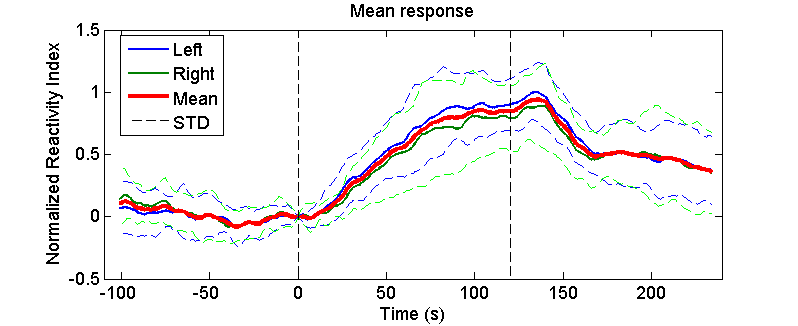Section: New Results
Diagnosis evaluation of acute ischemic stroke using new technics
Participants : Victor Vagné, Olivier Rossel, Emmanuelle Le Bars, Stéphane Perrey, Vincent Costalat, David Guiraud.
Cerebral infarctions can now be treated with new techniques using intravenous thrombolysis and thrombectomy. Their proven efficacy is directly correlated to the time lapse between the start of symptoms and the initiation of treatment. Currently, a definitive diagnosis can only be made once the patient has performed a radiological imaging (CT scan or MRI) on a medical center equipped with these expensive devices, thus enabling the medical team to initiate the appropriate treatment. Transit times during the pre-hospitalization phase before diagnosis are therefore often longer and have the greatest negative impact on the patient's prognosis. In collaboration with the interventional neuroradiology department of Gui de Chauliac Hospital, I2FH and Euromov, the EleVANT project is aiming to prospectively evaluate new techniques to assess a diagnosis of acute cerebral ischaemia. This low cost technology could be used in a mobile way for the very early diagnosis of cerebral infarction and thus reduce treatment delays, opening the way to a new generation of diagnostic tools. The concept consist on evaluating the cerebral near-infrared spectroscopy (NIRS) response to different stimulus, and to evaluate its lateralization. Recently, we tested our device on healthy volunteers. Method: Left and right hemisphere reactivity index are recorded by NIRS and normalized (Figure 10). Result: The experiment present a suitable feasibility and repeatability. In healthy subjects, a good response to the stimulus is recorded, and no significant differences between hemispheres are observed. The confidence level is acceptable since the amplitude response in above the standard deviation level.
Discussion: The approach reveal interesting results on healthy subject group. We expect a discriminant difference between hemispheric signals in acute cerebral ischemia.


